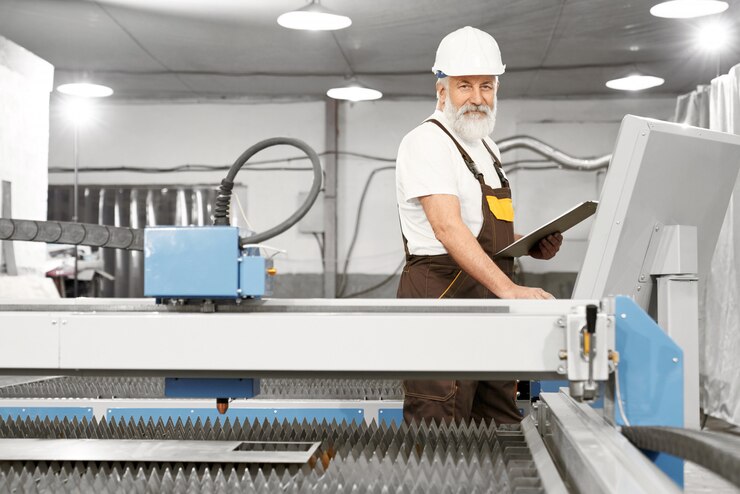Introduction to Shearing Machines
Shearing machines play a pivotal role in various industries, enabling precise cutting of metal sheets and plates with efficiency and accuracy. Whether you’re in the automotive, aerospace, or construction industry, selecting the right shearing machine for your business is critical for optimizing productivity and ensuring quality output.
Understanding Shearing Machine Types
Shearing machines come in different types, each with its unique features and functionalities. Hydraulic shearing machines utilize hydraulic power to deliver high-force cutting, while mechanical shearing machines rely on mechanical leverage. Electrical shearing machines, on the other hand, offer automation and precision control.
Factors to Consider When Choosing a Shearing Machine
Before investing in a shearing machine, several factors demand consideration. Firstly, assess your cutting requirements in terms of capacity and material thickness. Precision, accuracy, and operational efficiency are paramount, ensuring seamless integration into your workflow while maintaining quality standards.
Budget and Cost Considerations
While selecting a shearing machine, align your budget with the machine’s capabilities and long-term benefits. Consider total cost of ownership, including maintenance, energy consumption, and operational costs, to make an informed decision that balances initial investment with future returns.
Key Features to Look for
Look for shearing machines with high-quality blades designed for durability and precision cutting. Evaluate cutting speed and cycle times to optimize production efficiency. Additionally, prioritize safety features such as emergency stop buttons and safety guards to safeguard operators and minimize workplace accidents.
Maintenance and Support Services
Regular maintenance is essential to prolonging the lifespan and ensuring optimal performance of your shearing machine. Choose a supplier or manufacturer that offers comprehensive maintenance and support services, including troubleshooting assistance and spare parts availability.
Comparison of Top Shearing Machine Brands
Explore leading shearing machine brands in the market, comparing features, performance, and customer reviews to identify the best fit for your business requirements. Consider factors like reliability, reputation, and after-sales support when making your selection.
Customer Reviews and Testimonials
Seek feedback from existing users and industry experts to gain insights into the real-world performance and reliability of different shearing machine models. Customer reviews and testimonials provide valuable perspectives that can influence your purchasing decision.
Case Studies: Successful Implementations
Learn from real-world case studies and success stories showcasing how businesses have effectively integrated shearing machines into their operations to enhance productivity, streamline processes, and achieve tangible results.
Tips for Optimizing Shearing Machine Performance
Implement best practices and operational techniques to maximize the performance and efficiency of your shearing machine. Regularly calibrate equipment, train operators, and adopt preventive maintenance schedules to minimize downtime and ensure consistent output quality.
Common Shearing Machine Mistakes to Avoid
Avoid common pitfalls and mistakes when operating shearing machines, such as neglecting maintenance, overloading the machine beyond its capacity, or ignoring safety protocols. Awareness of potential risks and proactive measures can mitigate downtime and prevent costly repairs.
Future Trends in Shearing Machine Technology
Stay informed about emerging trends and advancements in shearing machine technology, such as automation, robotics, and IoT integration. Embrace innovation to stay competitive, enhance productivity, and meet evolving industry demands.
Conclusion
In conclusion, selecting the best shearing machine for your business requires careful consideration of factors such as cutting capacity, material type, budget, and maintenance requirements. By understanding your operational needs and evaluating available options, you can make an informed decision that drives efficiency, productivity, and success.
FAQs
- What is the typical lifespan of a shearing machine?The lifespan of a shearing machine can vary depending on several factors such as the quality of the machine, frequency of use, maintenance practices, and environmental conditions. Generally, well-maintained shearing machines can last for many years, with some models lasting up to two decades or more.
- How often should shearing machine blades be replaced?The frequency of blade replacement depends on factors like the type of material being cut, the volume of cutting operations, and the quality of the blades. As a general guideline, shearing machine blades should be inspected regularly for signs of wear and tear, and replaced when they become dull or damaged to maintain cutting precision and efficiency.
- Can shearing machines handle non-metallic materials?While shearing machines are primarily designed for cutting metal sheets and plates, some models can also handle certain non-metallic materials such as plastics, rubber, and composites. However, it’s essential to verify the machine’s specifications and capabilities to ensure compatibility with specific non-metallic materials.
- What safety precautions should be observed when operating a shearing machine?When operating a shearing machine, several safety precautions should be observed to prevent accidents and ensure operator safety. These include wearing appropriate personal protective equipment (PPE), following machine-specific safety guidelines, keeping hands and fingers away from moving parts, using safety guards and emergency stop buttons, and receiving proper training on machine operation and maintenance.
- Are there any environmental considerations associated with shearing machine operations?Shearing machine operations can have environmental implications, particularly in terms of noise pollution, energy consumption, and waste generation. To mitigate environmental impact, businesses can invest in noise reduction measures, adopt energy-efficient technologies, implement recycling programs for metal scrap and other waste materials, and comply with relevant environmental regulations and standards.



